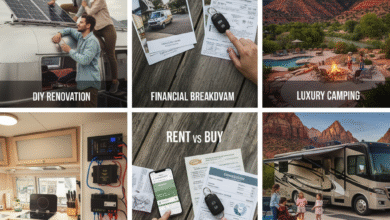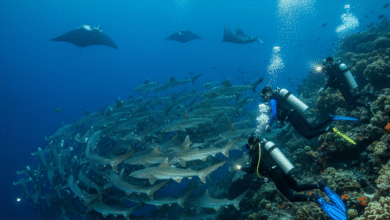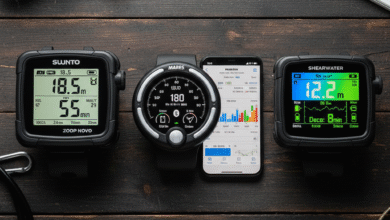The Ultimate African Safari Packing List: Elevate Your Game with High-End Camera Gear (and Capture Every Moment)
Are you dreaming of the vast savannas, the thrilling chase, and the majestic wildlife of an African safari? It’s more than just a vacation; it’s an experience of a lifetime. And if you’re investing in a luxury safari—perhaps at a breathtaking lodge like [Specific Luxury Camp], where every detail is perfected and the price tag reflects unparalleled service and access—you absolutely must be prepared to capture those once-in-a-lifetime moments.
This isn’t just any packing list. This is your definitive guide to assembling the ultimate gear for an African safari, with a strong emphasis on high-end camera equipment designed to turn fleeting encounters into stunning, frame-worthy photographs. We’ll also cover essential clothing, personal items, and why choosing the best binoculars for your Great Migration trip (or any wildlife viewing) is non-negotiable.
Let’s dive in!
Why High-End Camera Gear is Non-Negotiable for Your Luxury Safari
You’ve spent thousands on flights, accommodation, and the safari experience itself. Skimping on your camera gear now would be like buying a Ferrari and only driving it to the grocery store. African safaris offer unparalleled photographic opportunities, from the golden hour glow over a herd of elephants to the intense gaze of a leopard. Good gear makes the difference between a blurry snapshot and a professional-grade image you’ll cherish forever.
Here’s what serious safari photographers consider essential:
- Full-Frame DSLR or Mirrorless Camera Body (x2 Recommended)
- Why two? Redundancy is key. If one fails, you have a backup. Also, it allows you to mount two different lenses (e.g., a long telephoto and a mid-range zoom) and switch instantly without fumbling.
- Top Picks:
- Canon EOS R5 / R6 Mark II: Incredible autofocus, high resolution, excellent video capabilities.
- Sony Alpha A7R V / A9 III: Leading-edge mirrorless technology, fantastic low-light performance.
- Nikon Z8 / Z9: Robust, professional-grade bodies with superb image quality and speed.
- Telephoto Lenses (Your Most Important Investment)
- Why? Wildlife is often at a distance. You need serious reach.
- Must-Have: A 100-400mm, 150-600mm, or 200-600mm zoom lens. This versatile range allows you to capture both close-ups and wider animal-in-environment shots.
- Examples: Canon EF 100-400mm f/4.5-5.6L IS II USM, Sony FE 200-600mm F5.6-6.3 G OSS, Sigma 150-600mm F5-6.3 DG OS HSM Contemporary.
- For Serious Birders/Pro Photographers: Consider a fixed super-telephoto like a 400mm f/2.8 or 600mm f/4 for unparalleled low-light performance and bokeh, but be prepared for its size and weight.
- Mid-Range Zoom Lens
- Why? For wider landscape shots, camp photos, portraits, and animals that get unexpectedly close.
- Must-Have: A 24-70mm f/2.8 or 24-105mm f/4.
- Examples: Canon RF 24-70mm f/2.8L IS USM, Sony FE 24-70mm F2.8 GM II, Nikon NIKKOR Z 24-120mm f/4 S.
- Fast Prime Lens (Optional but Recommended for Low Light)
- Why? For incredibly sharp images in challenging low-light conditions (dawn/dusk game drives, camp at night).
- Consider: A 50mm f/1.8 or 85mm f/1.4.
- Essential Camera Accessories
- Plenty of SD/CFexpress Cards: High-speed, high-capacity. Don’t skimp! (Think SanDisk Extreme Pro, Lexar Professional).
- Extra Batteries: At least 3-4 per camera body. Power outlets can be scarce.
- Portable Power Bank: For charging phones, smaller cameras, or topping up battery chargers on the go.
- Dust Blower & Lens Wipes: The bush is dusty. Keep your gear clean!
- Bean Bag or Monopod: Tripods are often impractical in safari vehicles. A bean bag draped over the railing is perfect for stabilizing long lenses.
- Camera Bag/Backpack: A durable, dust-resistant bag (like a Lowepro or Peak Design) that fits carry-on regulations.
- Laptop/Tablet & Portable Hard Drive: For backing up photos nightly. Lacie Rugged drives are excellent for travel.
Choosing the Best Binoculars for Your Great Migration Trip
While your camera captures images, binoculars are your primary tool for experiencing the wildlife firsthand, observing behaviors, and spotting animals far beyond the reach of the naked eye. This is especially true during events like the Great Migration, where vast herds stretch across the plains.
Key Considerations for Safari Binoculars:
- Magnification & Objective Lens (e.g., 10×42):
- 10x: Excellent magnification for spotting distant animals without excessive hand shake.
- 42mm: A good objective lens size, balancing light gathering (brightness) with portability.
- Field of View (FOV): A wider FOV helps you track moving animals more easily.
- Eye Relief: Important for glasses wearers.
- Durability & Weatherproofing: Must withstand dust, bumps, and potential moisture.
Top Binocular Picks for Safari:
- Premium Tier (Worth the Splurge):
- Swarovski EL 10×42: Unparalleled optical clarity, brightness, and ergonomics. An investment for a lifetime.
- Zeiss Victory SF 10×42: Incredible wide field of view and brilliant low-light performance.
- Leica Noctivid 10×42: Exceptional contrast and color fidelity.
- Mid-Range (Excellent Value):
- Vortex Viper HD 10×42: Fantastic optics for the price, rugged construction.
- Nikon Monarch M7 10×42: Bright, sharp images, comfortable to hold.
- Maven B.3 10×42: Custom-built quality, great performance.
Essential Safari Clothing & Personal Items
Beyond your specialized gear, comfort and practicality are paramount.
- Clothing (Neutral Colors Recommended):
- Lightweight, breathable long-sleeved shirts and trousers (khaki, olive, grey, brown) to protect from sun and insects.
- A warm fleece or jacket for chilly mornings and evenings.
- Rain jacket (lightweight and packable).
- Comfortable walking shoes/boots.
- Wide-brimmed hat.
- Swimsuit (for lodge pools!).
- Health & Safety:
- Prescription medications (with copies of prescriptions).
- Basic first-aid kit (band-aids, antiseptic, pain relievers).
- High-SPF sunscreen.
- Insect repellent (containing DEET or Picaridin).
- Hand sanitizer.
- Malaria prophylactics (consult your doctor).
- Travel Essentials:
- Passport, visas, flight tickets, lodge confirmations.
- Travel adapter (Type G for East Africa, Type M for South Africa).
- Small backpack for daily essentials.
- Cash for tips (USD or local currency).
The “Why” Behind the Investment: A Glimpse into Luxury Safari Lodges
When you choose a high-end safari experience, like a stay at a renowned camp such as [Specific Luxury Camp – If you have one in mind, insert it here. Otherwise, generalize to “a top-tier luxury camp.”], you’re paying for more than just a bed. You’re investing in:
- Exceptional Guiding: Highly trained, experienced guides who can track, interpret, and position you for the best wildlife viewing and photography.
- Prime Locations: Lodges often boast exclusive concessions, meaning fewer crowds and better access to wildlife.
- Luxury & Comfort: Five-star service, gourmet meals, private plunge pools, and stunning views – a true oasis in the bush.
- Conservation Efforts: Many luxury lodges contribute significantly to local conservation and community projects.
This unparalleled access and comfort deserve to be documented with gear that can truly do it justice.
Final Thoughts: Prepare for Perfection
An African safari is a sensory overload in the best possible way. By meticulously planning your packing list, especially your camera gear and binoculars, you’re not just preparing for a trip; you’re preparing to fully immerse yourself and bring home a tangible testament to the incredible beauty you’ll witness. Don’t let a once-in-a-lifetime photo opportunity be missed due to inadequate equipment. Invest wisely, pack smart, and get ready for the adventure of a lifetime!
What’s your ultimate safari gear dream item? Share in the comments below!



